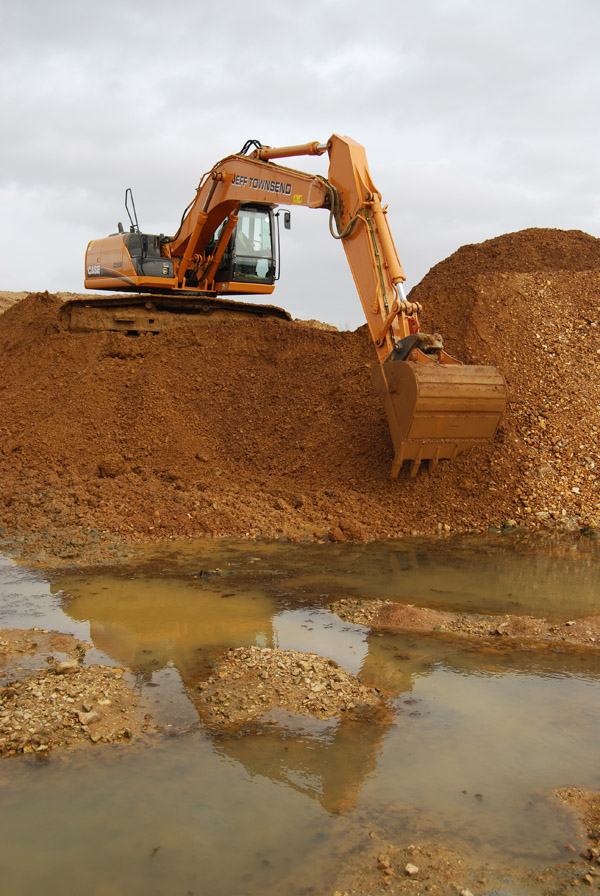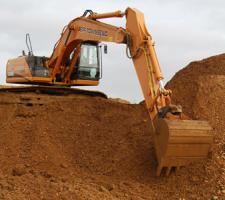
Preparation for restoration gets underway as extraction of material at Cemex's Longham Quarry nears completion
After 12 years and production of over 1.8million tonnes of sand and gravel, the life of Longham Quarry in Dorset, UK as an active gravel pit is nearing its end. Once the final aggregates have been processed, the site is destined to be reprofiled to form a 1.4million cubic metre reservoir.
Quarry operator
While work at the site may be winding down, the quarry used to be a hive of activity.
Three times a year, Southampton-based plant hire company, J Townsend, used to come in to remove the 300mm topsoil and then to finely grade the next 100mm for archaeological purposes. Despite the care towards the possible archaeological heritage of the site, there have not been significant finds but some artefacts dating back to the Bronze Age have been unearthed.
The topsoil is stored in temporary bunds around the perimeter of the gravel pit and the overburden is stored separately. Both will be used in construction of the reservoir and for landscaping purposes.
The quarry has been working the River Terrace deposits that were laid down during the Mid-Quaternary period around 800,000 years ago. London clay underlies the gravel at a depth of 25m below the site but Longham's planning permission only consents extraction to 3.5m.
Cemex quarry manager Steve Smith said that the 21.5tonne Case excavator has been used for most of the work with no need for a larger machine. "With a ditching bucket, it can quickly remove the topsoil with the high level of precision required," he said. "This fine control is even more useful in examining the underlying layer for archaeological remains. The machine also has the reach and the production capacity to keep the haul units busy."
With a maximum digging depth of 6.65 m, dump height of 6.84 m and forward reach of 9.73 m, the demand at the quarry was well within the operating envelope of the machine.
The extracted material is taken by two wheeled loaders from stockpiles to the processing plant which is formed by a BL
Processed materials are conveyed to stockpiles of sharp washed sand (<55 mm); 20 mm stone, 10 mm stone and oversized rejects. The oversized material is passed through the crusher and reprocessed, while silt from the sand washing plant is pumped to settling ponds.
A large proportion of the 140,000tonnes per year of material processed at the plant was used in the decorative stone market. Now Cemex is in the close down phase on site, extraction has stopped and the quarry workforce has dropped to just five - two operating loading shovels, one excavator operator, a plantman and a foreman.
Apart from managing the Longham quarry, Smith is also responsible for two wharfs - one in Poole and one in Southampton - which process material brought in by dredgers.
The quarry has been progressively restored and Cemex has already handed back sections of the quarry pit, which have already been converted into a reservoir known locally as the Longham Lakes.
Due to the environmental measures being implemented and nature conservation works, the lakes are already popular with birdwatchers and it is hoped that the new reservoir will quickly be adopted as a wildlife habitat. To help the process, over 3,500 trees will be planted during the regeneration works, carefully selected to provide food and nesting for birds and help prepare the site for its next incarnation.














